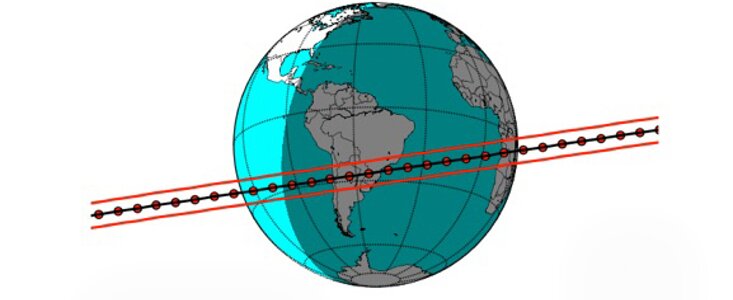Observations Set Limits on Possible Atmosphere Around Distant World
24 Septiembre 2013
Occultations are one of the best ways to determine the size of a Solar System object. The events occur when bodies orbiting the Sun pass between the Earth and a star, blocking out the star’s light for a brief period of time. Since astronomers know the speeds of Solar System bodies very precisely from their orbits, the time that the starlight is blocked directly tells us the size of the occulting object.
In addition, an occultation can uncover information about the Solar System body’s atmosphere, if it exists. A rocky body without an atmosphere will very suddenly extinguish the starlight, while one with an atmosphere will create a "fuzzy" event with a slow dimming and eventual blocking of the starlight.
For example, one of the reasons we know so much about Pluto, including that it has an atmospheric pressure about a million times lower than the Earth's, is from studies of occultations. While Pluto is one of the best-studied Trans-Neptunian Objects, very little is known about other worlds in that distant realm of our Solar System – known as the Kuiper Belt – even though some of the bodies there approach, or exceed, the size of Pluto.
Recently, several attempts have been made to learn more about the large (about 1000-kilometers in diameter) Trans-Neptunian Object called Quaoar (pronounced Kwa-whar) through occultation timings with Gemini. Quaoar is a prime candidate for occultations because it is currently passing through the Galactic plane, which has many more stars than other parts of the sky. Since the positions of many of the stars are not known precisely enough to predict an occultation well in advance, the technique used is to observe events that have the highest probability of being successful.
Wesley Fraser, a postdoctoral researcher from the National Research Council in Canada uses measurements of stars from the Canada-France-Hawaii Telescope (CFHT) Legacy Survey to make the predictions. Once the stars have been identified with CFHT, Gemini is a prime telescope for this kind of work because of its light-gathering power. Detecting an atmosphere on Quaoar requires a measurement of the fading starlight several times a second. Only very large telescopes such as the Gemini telescope can do this with the typical star brightnesses found in the Galactic plane. Gemini's acquisition camera, which is normally not used for science but for adjusting the pointing of the telescope, can provide a readout fast enough to capture these brief events.
Several attempts to measure the occultation with Quaoar have been made, but no occultation has been caught to date. However, some of the attempts brought Quaoar close enough to the background star to place constraints on whether the potential dwarf planet has an atmosphere and what kind of atmosphere it could be. These results have been published in The Astrophysical Journal Letters.


